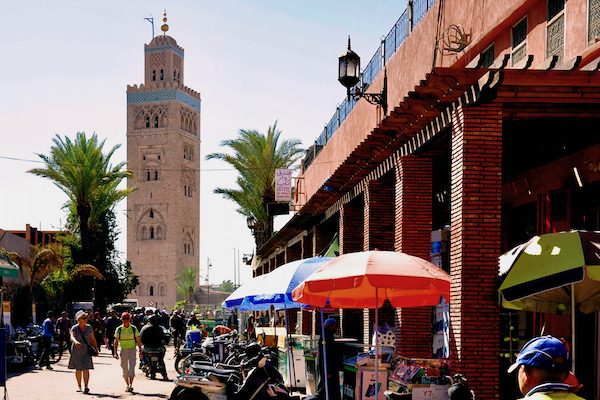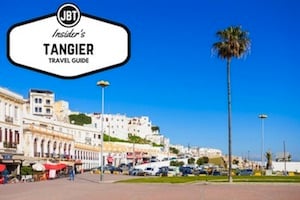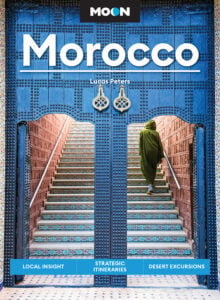You can’t miss the Koutoubia Mosque in Marrakesh, Morocco. It looms large over the vast expanse of the Jemma el-Fnaa, the famed public square. From afar, this is the beacon leading you to the Red City.
Can you imagine a caravan coming across Morocco hundreds of years ago? Rising up in front of weary travelers is a tower. Prayer time and hot quiet desert air allows the singsong chant of the muezzin drift out to meet them. Such sights and sounds have greeted travelers as they neared Marrakesh for more than 700 years. Sitting in the center of the old city is the Koutoubia Mosque, its famed minaret jutting high above it all.
The History of the Koutoubia Mosque
The Koutoubia Mosque has quite a history. Its name comes from the Arabic word for “bookseller.” The selling of manuscripts and books was commonplace and took in the surrounding gardens and at various stalls outside of the mosque. This is interesting, namely because even in the 1200s books were largely unknown in the Christian world.

When the Almoravid ruled Morocco, they made Marrakesh their capital city. The built a mosque on the same site as where the Koutoubia Mosque stands today. However when the Almohads captured the kingdom, forming the next ruling dynasty after the Almoravids, they destroyed much of the city, including the mosque. This was done purposefully as Almohad would ever consider praying in a building constructed by his enemy.
Under the Almohad Dynasty, a new mosque was erected on the site in what we now know as the “Almohad style.” In fact, parts of the present day mosque do date back to the era of Sultan Abd el-Moumen, who ruled from 1133-1163 CE.
A problem with the orientation of the prayer niche to Mecca resulted in a second mosque being built to correct this error. Thus, Koutoubia is a double mosque. As a hall-type structure, it covers 58,000 square feet or 5,400 square meters. Twenty-five thousand Muslims can pray within its walls. Koutoubia Mosque has 112 columns and 17 aisles. Leftover from the Almoravid mosque that had been destroyed earlier is an ornately carved pulpit from Almoravid Sultan Ali ben Youssef. This Moorish mosque is reputed to be a pinnacle of Almohad art. Spanish and Moorish influence can be seen in the shapes of the arches, cupolas and painted ceilings. Another fact unique to this mosque is it was built during the reign of one ruler. Other comparable mosques, such as The Great Mosque in Cordoba, took over 200 years to be completed.

The Myth of the Koutoubia Mosque
Supposedly, the minaret of Koutoubia Mosque was to be built with three gold spheres. There are different interpretations as to the significance of these spheres. They could symbolize the three great Arab mosques: al-Haram Mosque in Mecca, Prophet Mosque in Medina and al Aqsa Mosque in Jerusalem. Or, it might have been that they were meant to symbolize the three elements of life: water, air and fire.
At some point, a fourth sphere was added. The story is that the wife of Sultan Yacoub el-Mansour broke her fast prematurely during the holy month of Ramadan. To pay her penance, she had her gold jewelry melted and made into a fourth sphere. Alternative myths have it that the original four spheres were all from her jewelry.

Today, the spheres you see topping the tower are made of copper. It is unknown what happened to the original spheres and if they were, in fact, made of gold in the first place… or if it was just another long yarn spun by the many storytellers of Marrakesh.
The Minaret of the Koutoubia Mosque
Completed during the reign of Sultan el-Mansour, this unique minaret was quite a feat of engineering for its time. Standing 221 feet (69 meters) high, a ramp is built around the tower so that the muezzin could more easily walk to the top of the incredible tower. Six rooms are placed, one on top another make up the interior. Minaret towers, Giralda in Seville and Hassan in Rabat, are modeled after the Koutoubia.
The Koutoubia Mosque Today
In 1997, the Koutoubia Mosque underwent necessary renovation to strengthen it and update Non-Muslim visitors can admire the mosque and minaret, not to mention the Koutbouia Gardens, from the outside, and the nearby Cyber Park, the first public park in Morocco with free wifi! However, non-muslims are not allowed to enter the interior areas of the mosque, like most other mosques around Morocco.

About the Author
 Text and photos by award-winning writer, photographer, and Morocco expert, Lucas Peters. After spending years traveling to the distant corners of Morocco and writing about his adventures, Lucas penned the 1st and 2nd editions of the best-selling guidebook Moon Guidebooks: Morocco as well as Marrakesh and Beyond published by Hachette. He edited and contributed to the Our Morocco anthology and helps the travelers of Journey Beyond Travel experience the adventure of a lifetime. He lives in Tangier with his family.
Text and photos by award-winning writer, photographer, and Morocco expert, Lucas Peters. After spending years traveling to the distant corners of Morocco and writing about his adventures, Lucas penned the 1st and 2nd editions of the best-selling guidebook Moon Guidebooks: Morocco as well as Marrakesh and Beyond published by Hachette. He edited and contributed to the Our Morocco anthology and helps the travelers of Journey Beyond Travel experience the adventure of a lifetime. He lives in Tangier with his family.









